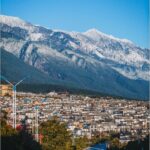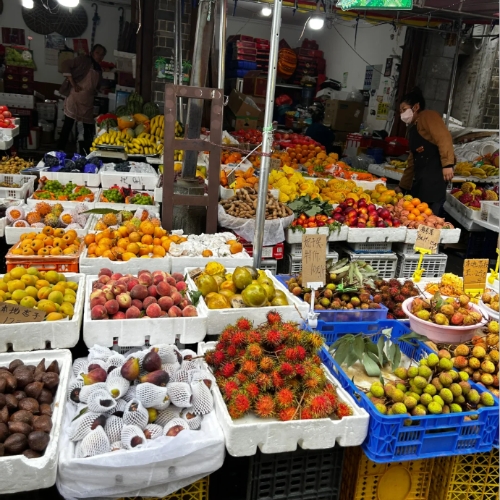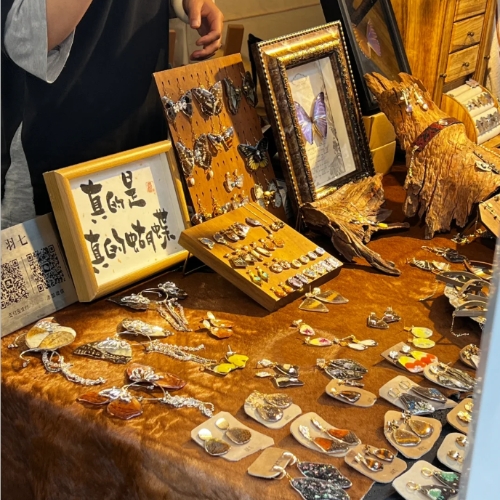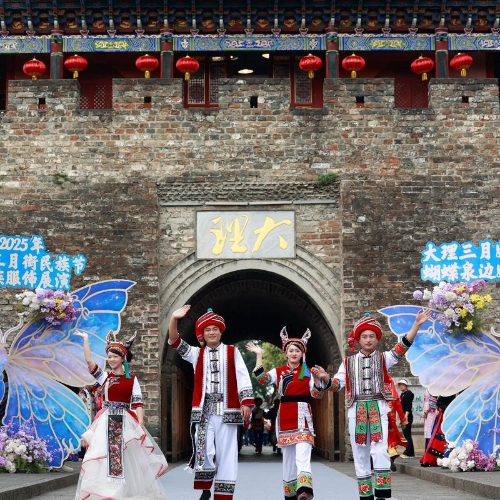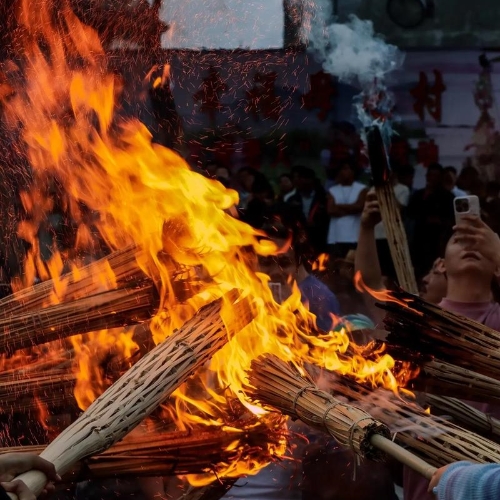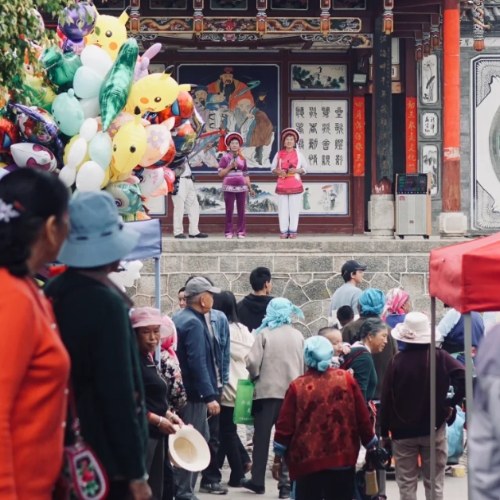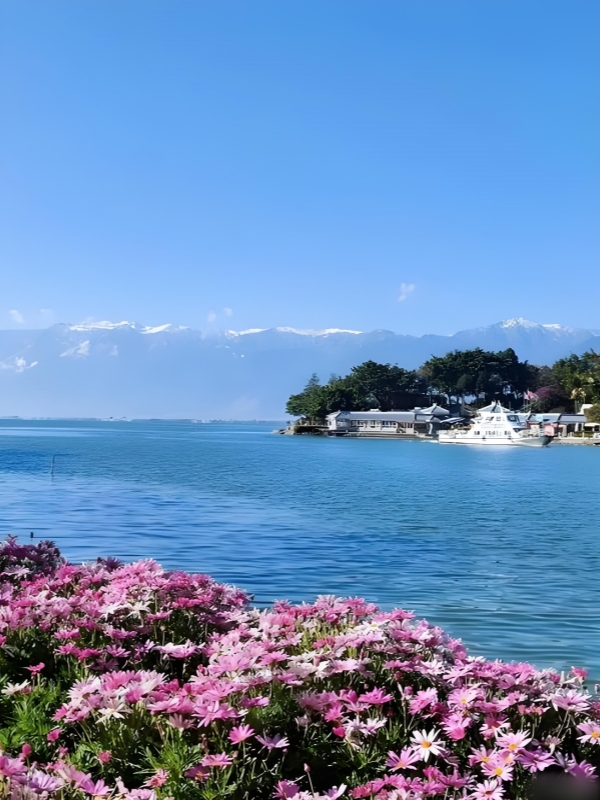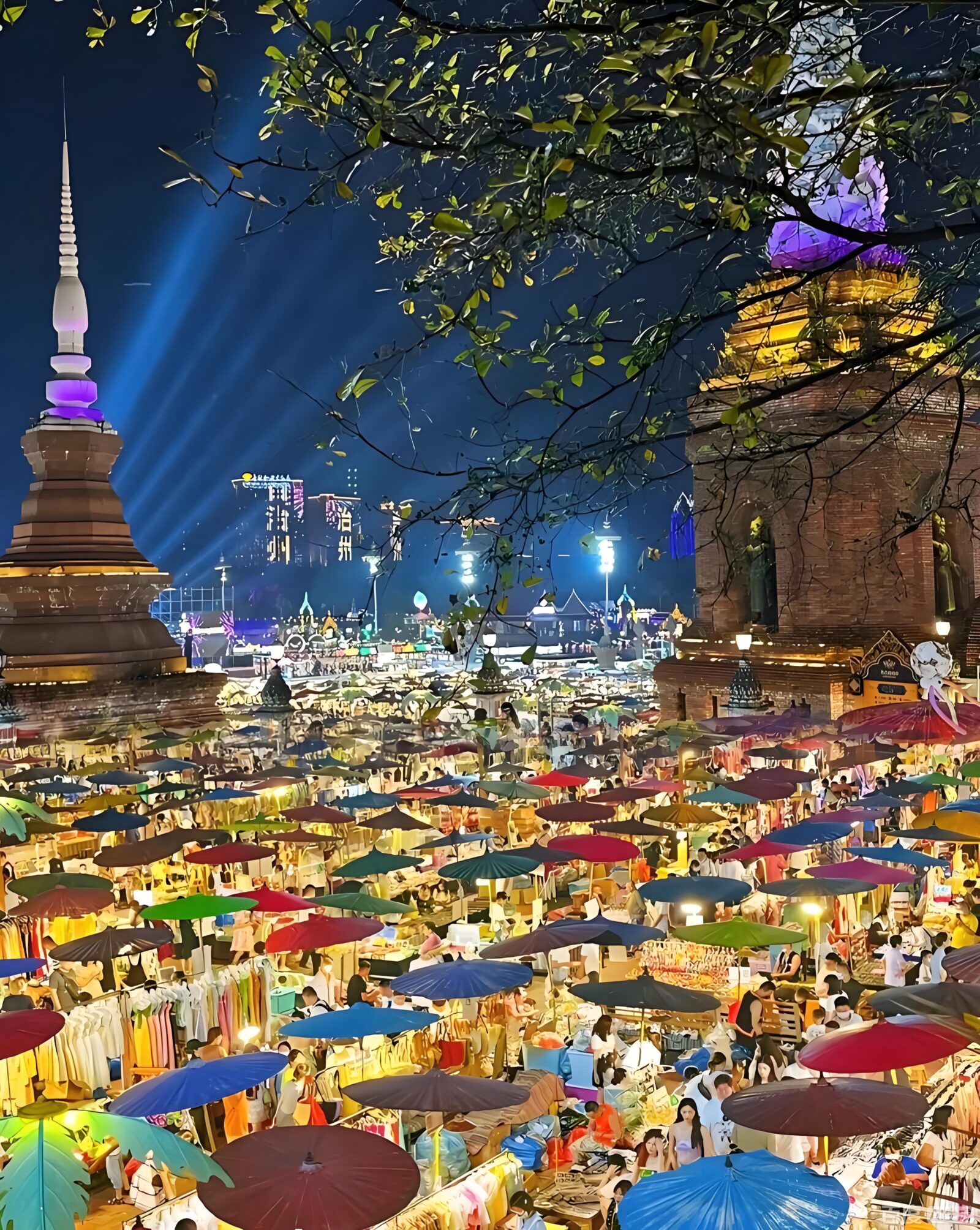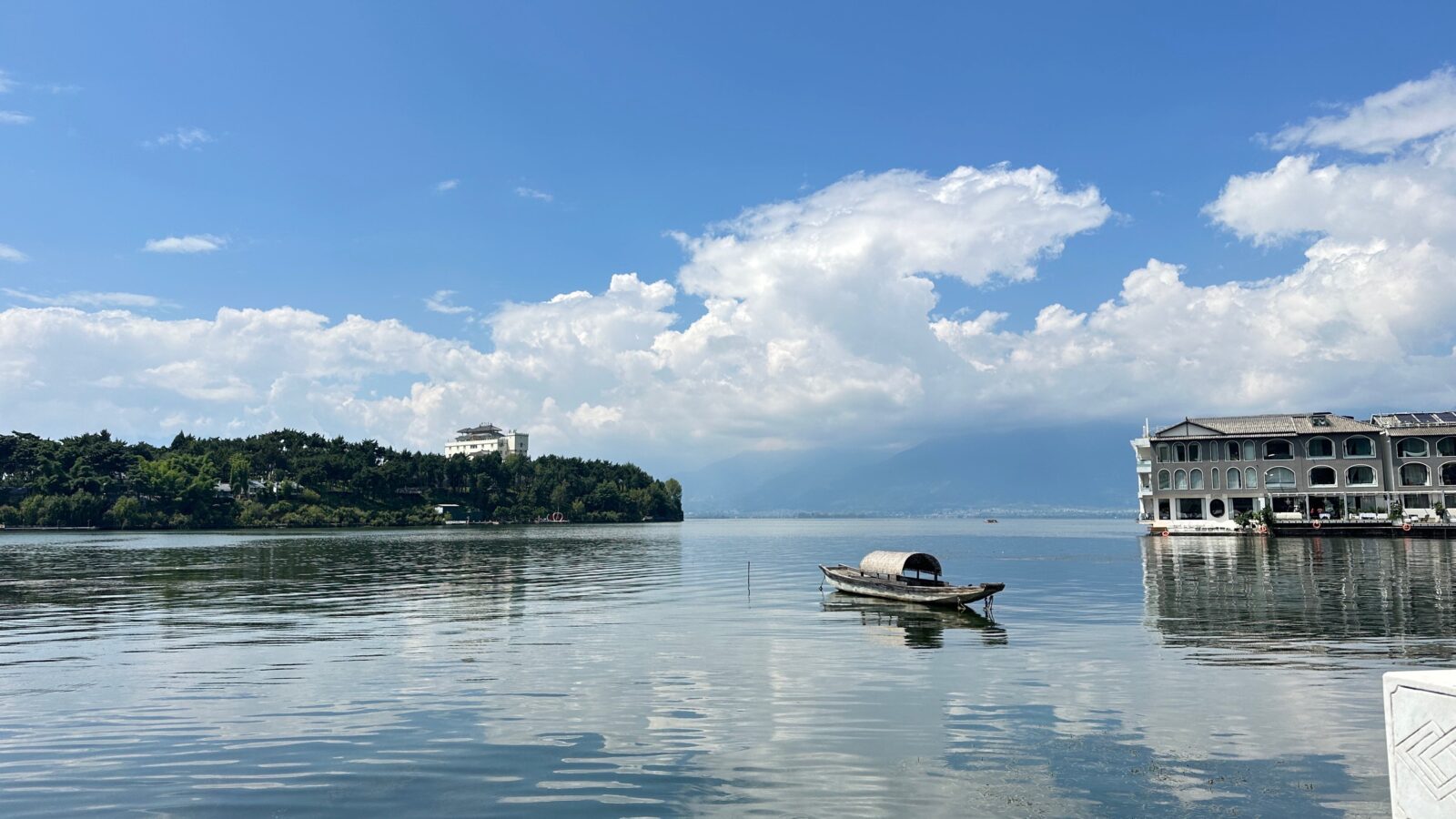
Dali
Planning your Yunnan adventure and wondering what things to do in Dali actually make it worth the detour? Here's the honest answer: Dali offers something rare in modern China. You get authentic Bai culture, stunning natural landscapes, and a laid-back vibe you won't find in over-touristed Lijiang. Cycle along the 130-kilometer Erhai Lake loop. Explore ancient towns where locals still outnumber tourists. Hike mountain trails with panoramic views that rival Switzerland.
This guide covers the best things to do in Dali based on recent real travel experiences and local insights. You'll find a detailed 3-day itinerary, insider tips on avoiding tourist traps, and practical information including the 2025 visa-free policy updates. Whether you're a budget backpacker or a family looking for cultural experiences, you'll discover why travelers consistently extend their Dali stay.
Why Dali Should Be on Your China Travel List — Where Nature Meets Ancient Bai Culture
Dali sits at the perfect intersection of history and nature. This ancient capital of the Nanzhao Kingdom offers 1,200 years of stories, while Cangshan Mountain towers behind with peaks reaching 4,000 meters. Meanwhile, Erhai Lake sparkles ahead with 130 kilometers of cycling paradise.
The Bai ethnic minority makes up over 80% of the local population, giving the region its distinctive character. You'll see their white-walled courtyard homes with intricate woodwork everywhere. Traditional tie-dye workshops still operate in Zhoucheng Village, and morning markets in Xizhou Ancient Town sell local produce instead of tourist trinkets. This authenticity sets Dali apart from more commercialized destinations. Heading to Dali soon? Check Yunnan Weather Guide first to avoid any surprises.
Dali vs Lijiang: Which One Fits Your Travel Style Best?
This question dominates China travel forums for good reason. Both cities showcase Yunnan's ethnic diversity and mountain scenery, yet they serve different traveler needs.
Dali feels more livable and less staged. You'll find working neighborhoods beyond the tourist zone where local families still live in the ancient town's courtyards. In contrast, Lijiang's Old Town has become a UNESCO site where most residents moved out years ago, replaced by souvenir shops and tour groups.
Quick Comparison:
- Dali wins for: Cycling, lakeside relaxation, authentic local life, longer stays
- Lijiang wins for: Better-preserved architecture, proximity to Jade Dragon Snow Mountain
- Time recommendation: 3-4 days Dali, 2-3 days Lijiang
Transportation accessibility favors Dali slightly. High-speed trains from Kunming reach Dali in 2 hours, while Lijiang requires 3+ hours by bus. If you're doing a Yunnan loop, visit Dali first and Lijiang second to maintain a natural progression.
Top 5 Things To Do in Dali — From Lakeside Rides to Mountain Views
1. Erhai Lake — Cycle the 130km Route with Endless Mountain Scenery
This isn’t just a ride — it’s Dali’s must‑do experience, circling Erhai Lake with Cangshan Mountain always in view. The 130‑km loop passes Bai villages and rice fields, best enjoyed as a two‑day trip at an easy pace.
The western route from Ancient Town to Xizhou offers the most charm, with mural‑covered houses and quiet fishing piers. The Haixi Highway can be busy, but views of shining water and peaks make it worthwhile. The east side feels calmer. Stop in Shuanglang for coffee or Wase for cheap local meals. Rent an e‑bike (¥60–80/day) with 60–80 km range, enough for the full route.
2. Dali Ancient Town — Wander Hidden Lanes Beyond the Tourist Buzz
Yes, Dali Ancient Town is quite commercial, but still worth a walk. Renmin Road and Fuxing Road overflow with souvenir shops for tour groups, yet hidden corners keep their charm for those who look closer. The layout follows ancient Chinese city design with gates and stone walls. The South Gate glows at sunset with Cangshan Mountain in the backdrop, while Wuhua Tower offers rooftop views in golden light around 5pm.
To find the real Dali, skip the main streets during rush hours and wander Yuer Road or Bo’ai Road for local life. You’ll spot Bai-style courtyards, rice noodle stalls (¥8–12), and old houses turned into calm cafés. Entry to the town is free — ignore anyone trying to charge you.
Alongside Dali Old Town stands another legend — explore its secrets in Discover Lijiang Old Town.
3. Three Pagodas — Capture Dali’s Timeless Silhouette at Sunrise
The Three Pagodas of Chongsheng Temple have stood for over 1,000 years, rising proudly against Cangshan Mountain. The main tower climbs 69 meters high, forming Dali’s most recognizable postcard view.
Many visitors find the ¥121 entrance ticket steep, especially since entry into the pagodas isn’t allowed. Most travelers choose to shoot photos from the Juying Pond reflection pool, which perfectly mirrors the pagodas — and costs nothing.
For a thrifty tip, walk the east road at sunrise (around 6:30am). Local photographers rent tripod spots for ¥10, letting you save cash for better adventures nearby.
4. Cangshan Mountain — Ride the Cable Car for Breathtaking Alpine Trails
Cangshan Mountain rises behind Dali Ancient Town with 19 peaks over 3,500 meters. Trails and cable cars reveal alpine forests and sweeping views of Erhai Lake that rival any in China.
Take the Zhonghe Cable Car to the Jade Belt Road at 2,600 meters — a mostly flat 18-km trail fit for casual hikers. Gantong Cable Car climbs higher for those craving challenge, while Ximatan tops out near 3,900 meters for serious adventurers.
Pack light but warm. Temperatures drop about 10°C mid-mountain, and mornings stay cloudy until 11am. Start late for clear skies, or ask locals about the Gantong Temple trail — a free, scenic path saving the ¥90 fare. Cangshan and Erhai make a perfect duo — but what secrets wait at Dianchi Lake?
5. Shaxi Ancient Town — Step Into a Living Tea Horse Road Village
Shaxi Ancient Town is one of Yunnan’s best-kept Tea Horse Road posts, praised by UNESCO for preserving its authentic charm. Unlike other towns, Shaxi kept its quiet soul — no chains, just cobbled alleys and mountain air.
Life revolves around Sideng Square, where Bai and Yi houses line stone lanes. The Friday Market still draws villagers from nearby hills, a living echo of centuries-old trade. Getting here takes about two hours by bus (¥35–40) or a private car (¥300–400). Stay overnight if you can. After crowds leave, Shaxi glows under morning mist and riverside lights. Yujin Bridge, from the Qing era, is best seen at dawn — when locals lead horses to drink, and it truly feels like old China.
Dali’s Local Markets — See Where Real Bai Life Still Thrives
- North Gate Market
- South Gate Lvyu Agricultural Market
- Chuangdan Factory Market
Dali's local markets offer something tour groups miss — genuine glimpses into daily Bai life. These bustling spaces let you experience the city's market culture where locals shop for fresh produce at prices lower than tourist areas. The atmosphere captures authentic market energy that hasn't changed for generations.
North Gate Market (北门菜市场)
Located just inside the North Gate of Dali Ancient Town, this market is the go-to spot for locals. The best time is 7–10am, when trucks unload fresh produce from nearby farms and the air hums with activity. Seasonal fruits pile high, and stalls brim with fish, duck, and daily essentials.
Prices are much lower than in tourist zones, drawing local families for daily shopping. Vendors shout deals while elderly Bai women sell their homegrown vegetables from woven baskets — the perfect glimpse of real Dali life beyond the tourist crowd.
Wander slowly through the aisles to watch vendors arrange vibrant displays or hand-roll noodles made that morning. The market runs 7am–7pm, but mornings still carry the richest buzz.
South Gate Lvyu Agricultural Market (南门绿玉农贸市场)
Just outside Dali Ancient Town's South Gate, this market stands out for its prepared foods and local snacks. It truly comes alive after 3pm, when vendors set up steaming stalls — ideal for an afternoon bite.
You’ll spot chicken feet in all flavors, sizzling grilled fish filling the air with aroma, and the famous Spicy Jiaoma Chicken (椒麻鸡) that locals swear by. Traditional old-style bread (老面包) vendors still bake crusty loaves using century-old fermentation methods.
This market caters to locals seeking ready-to-eat meals. Prices stay friendly since few tourists visit, letting you sample plenty for ¥20–40 total. It opens from 3pm, with the liveliest scene between 4–6pm.
Chuangdan Factory Market (床单厂集市)
A super artsy creative block filled with handcrafted and original works — from woven crystal bracelets and handmade bags to indie poetry books and paintings. Every corner feels alive with creativity, and even foreign artists run small stalls here.
Unlike the repetitive souvenirs in the Old Town, everything here feels unique, though prices are a bit higher. Still, it’s worth picking up a few pieces as keepsakes or gifts for friends. The market atmosphere blends art, culture, and community, making it one of Dali’s most refreshing spots for travelers looking for something authentic.
Bai Ethnic Festivals — Celebrate Ancient Traditions in Full Color
- San Yue Jie Festival
- Torch Festival
- Rao San Ling Festival
Dali's calendar fills with traditional Bai ethnic festivals throughout the year. These celebrations showcase centuries-old customs and religious beliefs, and planning your visit around festival dates adds incredible cultural depth to things to do in Dali. You'll witness traditions that local families have practiced for generations.
San Yue Jie Festival — Dali’s Biggest Spring Celebration of Trade and Music
The San Yue Jie Festival is the biggest celebration in Bai culture, held every spring outside Dali Ancient Town’s West Gate. It runs from the 15th to 20th day of the third lunar month (late March or early April), filling streets with music, colors, and the scent of fresh street food.
Stalls overflow with hand-embroidered textiles, carved marble crafts, and herbal goods once traded on the old Tea Horse Road. Locals and travelers mingle among vendors, sharing smiles and bargaining in the mountain breeze.
It’s more than a market — horse races thunder across fields, dragon boat races stir the nearby waters, and Bai opera echoes through the crowd. Dating back over a thousand years, this event blends faith, festivity, and community. Book hotels early — spots fill fast amid the unforgettable buzz.
Torch Festival — Join the Night of Fire, Dance, and Bai Culture
The Torch Festival falls on the 25th day of the sixth lunar month (around July) and lasts three days. For the Bai people, it’s a celebration of fire as a sacred force — one that drives away evil and brings good fortune.
Families prepare pinewood torches days ahead, lighting them at gates as villages ignite massive central fires that blaze into the night. Dancing, songs, and laughter fill the air while roasted meat and sweet snacks scent the smoky evening breeze.
To witness its truest form, skip the tourist center and join locals in Xizhou or Zhoucheng Village near Dali. Villagers often welcome respectful visitors who wish to share in the light and rhythm of the festival night.
Rao San Ling Festival — Follow Pilgrims Circling the Sacred Temples
The Rao San Ling Festival runs from the 23rd to 25th day of the fourth lunar month (around May). It honors the Bai people’s ancient faith, linking three sacred temples — Shengyuan, Jinkui, and Chongsheng — through ritual pilgrimages.
Families don bright Bai costumes, with women wearing ornate headdresses and embroidered jackets. Hundreds join the lively procession, singing folk songs and dancing to traditional instruments like the sanxian and lusheng.
Beyond faith, it’s a time for community and connection. Villagers pray for good harvests and health while young people meet potential partners. Along the Erhai Lake routes, colorful crowds and rice fields create stunning photography scenes — a true snapshot of Bai heritage at its brightest.
Your Perfect 3-Day Dali Itinerary — Plan Smart, Feel Local
Most travelers spend 3-4 days exploring things to do in Dali. This itinerary balances the essential highlights with authentic cultural experiences while allowing flexibility for your personal interests.
| Day | Route | Highlights | Tips |
|---|---|---|---|
| Day 1: Ancient Charm & Culture | Dali Ancient Town → Three Pagodas | Morning stroll in Ancient Town, visit South Gate and Wuhua Tower, enjoy street food breakfast. Afternoon visit Three Pagodas or photograph them from Juying Pond. Evening dine at a courtyard restaurant and walk through the night market. | Visit Wuhua Tower around 5pm for the best sunset views. Skip noisy bars on Renmin Road for a quieter evening. |
| Day 2: Nature & Mountains | Dali → Cangshan Mountain | Take Zhonghe Cable Car up to Jade Belt Road, hike along the scenic trail for panoramic Erhai Lake views. Descend via Gantong Temple route for fewer crowds. | Bring warm layers — temperatures drop 10°C mid-mountain. Start around 11am for clear skies after morning mist. |
| Day 3: Lakeside Ride & Local Life | Erhai Lake Loop → Xizhou → Shuanglang | Rent an e-bike (¥60–80/day) and ride along the Erhai Lake loop. Stop at Xizhou Town to try Xizhou Baba and explore Yan Family Courtyard. Continue toward Shuanglang, relax at lakeside cafés. | Start early to avoid heat. Bring a power bank for navigation and plan lunch at Shuanglang’s lakeside cafés. |
| Optional Day 4: Hidden Villages & Markets | Zhoucheng Village → Local Markets | Visit Zhoucheng Village for tie-dye workshops, then explore North Gate Morning Market for Bai snacks and produce. | Best time for the market: 7–10am. Bring cash for small vendors. |
Best Time to Visit Dali — When Weather, Festivals, and Crowds Align
Dali's spring-like climate means you can visit year-round. However, each season brings different experiences worth considering.
Spring (March-May) ranks as peak season for good reason. Temperatures hover around 20°C during the day, while azaleas bloom across Cangshan Mountain. The March Fair Festival happens during this window too, adding cultural depth to your visit.
Summer (June-August) is technically rainy season but don't let that scare you. Afternoon showers usually last 1-2 hours then clear up, making morning activities work perfectly. As a bonus, accommodation prices drop 30-40% compared to spring.
Autumn (September-November) delivers the clearest skies for photography. Erhai Lake reflections look stunning during golden hour, and temperatures stay comfortable around 18°C. This season sees fewer tour groups than spring, creating a more relaxed atmosphere.
Winter brings occasional cold snaps, especially on cloudy days. Pack layers if visiting December through February.
Avoid These Dates:
- Chinese National Holiday (Oct 1-7): Prices double, attractions overflow
- Spring Festival (late Jan/early Feb): Many businesses close
The 2025 visa-free policy changes planning slightly. Citizens from 54 countries get 10-day transit stays, while European passport holders from France, Germany, and Italy enjoy 30-day visa-free access through 2025.
Practical Dali Travel Tips — Move, Stay, and Save Like a Local
Getting Around — Best Ways to Explore Without Missing Hidden Gems
E-bike Rental (Most Popular) Electric bicycles provide the best way to explore. Rental shops cluster near ancient town gates with costs running ¥60-80 per day. Deposit requirements are ¥300-500. Battery range covers 60-80km, and you should check the bike before leaving. Return by 6pm as late returns cost ¥10-20 per hour.
Public Buses Route K8 connects Railway Station to Ancient Town (¥2, 30 minutes). Route C8 runs to Xizhou (¥3, 45 minutes). Buses operate 7am-7pm. Pay with cash.
Didi (Chinese Uber) Download Didi app before your trip. Rides within ancient town cost ¥10-25, while trips from ancient town to railway station run ¥35-50.
Reaching Dali — Train, Bus, and Route Tips for Every Budget
From Kunming (Most Common):
| Transport | Duration | Price | Notes |
|---|---|---|---|
| High-speed train | 2 hours | ¥145–185 | Departs every 30–60 minutes |
| Regular train | 6–7 hours | ¥90–120 | Overnight sleeper available |
| Flight to Dali Airport | 45 minutes | – | Airport located 13 km from town |
The high-speed train is the best option. Book tickets on Trip.com or 12306.cn, and during holidays, book 7-10 days ahead. The train station sits 15km from Dali Ancient Town. Take bus K8 (¥2) or taxi (¥40-50).
From Lijiang:
| Transport | Duration | Price | Notes |
| Bus | 2.5–3 hours | ¥70–85 | Buses every 30 minutes |
| Train | 4 hours | ¥50–65 | Slower but scenic route |
| Private car | 2 hours | ¥400–500 | For full car, more flexible |
Where to Stay — Ancient Town Buzz or Lakeside Calm?
Dali Ancient Town (Most Convenient) Staying inside the walls puts you walking distance from everything. You'll hear noise until 11pm-midnight on busy streets. Guesthouses range from budget dorms (¥50-80) to boutique hotels (¥400-800). South Gate vicinity offers quieter nights.
Caicun — Lakeside Relaxation This village sits 3km from town along Erhai Lake. It's quieter with lake views and prices running ¥120-300. Perfect for travelers wanting peaceful mornings, Caicun serves as the cycling starting point.
Xizhou Ancient Town — Most Authentic Staying in Xizhou puts you in a working Bai village. Accommodation includes traditional courtyard guesthouses (¥180-350). The Linden Centre offers luxury at ¥800-1500. You'll need to bike into Dali Ancient Town for nightlife.
Budget: Dali Ancient Town guesthouse (¥120-200) Mid-Range: Caicun lakeside guesthouse (¥200-350) Splurge: The Linden Centre in Xizhou (¥800-1500)
Beyond Dali: How to Extend Your Yunnan Trip
Most international travelers don't visit Dali in isolation. Here's how to extend your trip efficiently through Yunnan's highlights.
Lijiang — Discover Canals, Naxi Culture, and High Peaks Nearby
Lijiang sits 180 kilometers north of Dali. High-speed buses run every 30 minutes for ¥70-85, with the journey taking 2.5-3 hours. Most travelers visit Dali first then continue to Lijiang for a natural progression. Things to do in Lijiang City include the UNESCO-listed Old Town with its maze of canals. The Naxi ethnic minority dominates here, offering different cultural experiences.
Jade Dragon Snow Mountain offers glacier park access at 4,680 meters, while Tiger Leaping Gorge sits between Lijiang and Shangri-La.Budget 2-3 days for Lijiang if you're not hiking Tiger Leaping Gorge. The Old Town gets incredibly crowded from 10am-6pm, so stay outside the ancient town and visit early morning or evening. If you love Dali’s calm alleys, wait till you see this — explore Discover Lijiang Old Town and learn its magic.
Combined Trip: If you have 6-7 days total, split it 4 days Dali and 2-3 days Lijiang.
Kunming — Start or End Your Journey in Yunnan’s Capital
Most international travelers enter Yunnan through Kunming. The capital works well as an arrival/departure point but doesn't need more than 1-2 days. High-speed trains connect Kunming to Dali in 2 hours for ¥145-185.
Kunming activities include the UNESCO Stone Forest and Green Lake Park. The Yunnan Ethnic Village provides an introduction to the province's 25 ethnic minorities, though it feels somewhat touristy. Most travelers spend one evening in Kunming then take the morning train to Dali. Need more insider info before your Kunming journey? Check Kunming for detailed tips and local hacks.
Typical Yunnan Loop: Kunming (1 day) → Dali (3-4 days) → Lijiang (2-3 days) → Shangri-La (2-3 days) → Kunming (departure). This requires 9-12 days total.
Shangri-La — Touch Tibetan Culture Amid Stunning Mountain Scenery
Shangri-La brings you into Tibetan cultural territory at 3,200 meters elevation. From Dali, take a direct bus (¥120-150, 5-6 hours). Most travelers do Kunming → Dali → Lijiang → Shangri-La. Main attractions include Songzanlin Monastery — Yunnan's largest Tibetan Buddhist monastery. Pudacuo National Park showcases pristine alpine lakes, while Dukezong Ancient Town offers Tibetan architecture and culture.
Allow 2-3 days in Shangri-La. Your first day involves acclimatizing to altitude, Day 2 covers Songzanlin Monastery, and Day 3 focuses on Pudacuo National Park.
Important: Shangri-La gets cold year-round. Pack warm clothes even in summer.
FAQ: Things to Do in Dali — Your Most Common Questions Answered
Q: How many days should I spend in Dali?
Three to four days is ideal. Two days covers Ancient Town, Three Pagodas, and Erhai Lake cycling. A third day lets you explore Cangshan Mountain, and a fourth adds Shaxi or tie-dye workshops. Most travelers find three days perfect for sightseeing and relaxation. If you enjoy slower travel, add an extra day to explore Bai villages or lakeside cafés.
Q: Is Dali safe for solo female travelers?
Yes. Dali is safe with low crime rates and friendly locals. Women often cycle around Erhai Lake alone. Just stay cautious at night, avoid unlit alleys, and use registered taxis or Didi. Guesthouses often help with local tips and restaurant suggestions. Locals are generally helpful if you need directions or assistance.
Q: What should I skip in Dali if on a budget?
Skip the ¥121 Three Pagodas ticket—photo them from Juying Pond for free. Avoid overpriced Erhai boat tours and Renmin Road restaurants. Instead, rent an e-bike for ¥60–80 and eat in Xizhou or local spots south of Ancient Town for ¥30–50 meals. Also, shop in local markets for snacks instead of souvenir shops.
Q: Can I visit Dali without speaking Chinese?
Yes. Ancient Town has some English signs and hosts who speak basic English. Use translation apps like Pleco or Google Translate (VPN needed). Keep your hotel name written in Chinese for taxis and use photo menus or camera translation when dining. Learning a few greetings in Chinese always impresses locals.
Q: What’s the best app for navigation around Dali?
Use Maps.me—it works offline without VPN. Download Yunnan maps before arriving to navigate Erhai cycling routes, trails, and towns. GPS works even without cell service. Google Maps needs VPN and drains battery faster in rural areas. Keep a paper map or screenshot as backup in case of signal loss.
Q: When should I avoid visiting Dali?
Avoid October 1–7 and Chinese New Year, when crowds surge and prices triple. Visit in March–May or September–November for pleasant weather, moderate visitors, and normal hotel rates. Booking early helps secure better stays during peak months.
Q: What to do in Dali if it rains?
Head indoors: visit the Dali Museum, join a Bai cooking class, or try tie-dye workshops in Zhoucheng Village. Cozy cafés near South Gate are perfect for rainy-day reading. Some art galleries in Ancient Town also offer great shelter and warm tea.
Q: Is Cangshan Mountain hike difficult for beginners?
Not really. The Jade Belt Road trail is mostly flat at 2,600 meters, perfect for beginners. It’s 18 km long, but you can walk 6–8 km and descend anytime by cable car. Bring water and light snacks; there are few shops along the trail.



